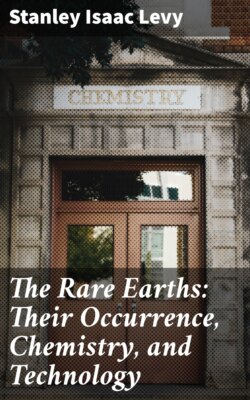Читать книгу The Rare Earths: Their Occurrence, Chemistry, and Technology - Stanley Isaac Levy - Страница 164
На сайте Литреса книга снята с продажи.
ОглавлениеThortveitite is orthorhombic; a: b: c = 0·7456: 1: 1·4912; commonly combinations of pyramids o {111} and s {211} with prism m {110}, in radial aggregates of crystals elongated parallel to the c axis. Cleavage parallel to m, fair. Twin plane m (110), twinning very common.
Refraction strong; birefringence strong, negative. Acute bisectrix perpendicular to (001), plane of the optic axes (010). Hardness, 6-7; sp. gr. 3·571. Extremely brittle; lustre brilliant, vitreous to adamantine. Colour, greyish-green, white to reddish-grey on alteration; in transmitted light yellowish-green, after ignition, reddish; the change being probably due to presence of oxides of iron.
It is fusible with difficulty, and only partially attacked by hydrochloric acid. It was found by Thortveit, in 1910, in a pegmatite vein in granite, at Iveland, Sätersdalen, S. Norway, accompanied by euxenite, monazite, beryl, and the usual vein-materials (quartz, felspar, etc.). It was analysed and recognised as a new mineral by Schetelig (loc. cit.).
The following minerals, of which particulars will be found in the alphabetical list, also belong to this class:
Bagrationite, Bodenite, and Muromontite, varieties of allanite with differences in composition and physical properties.
Yttrialite, a weathered variety of gadolinite.
Elpidite, Erdmannite and Cainosite, more complex silicates.
Rowlandite, a comparatively simple silicate of the yttrium metals.
Yttrogarnet, a variety of garnet containing yttrium metals.
